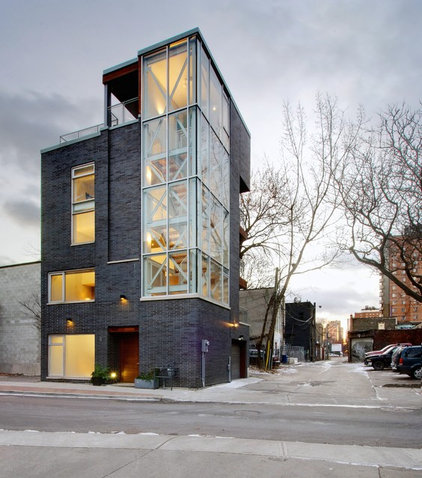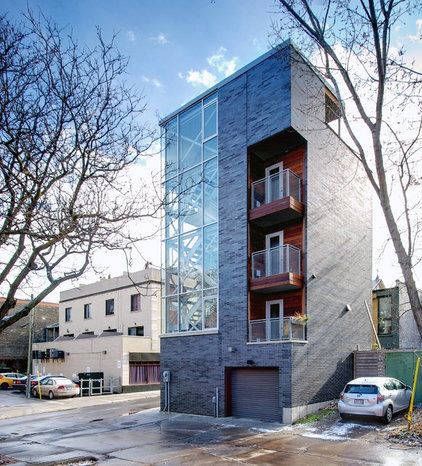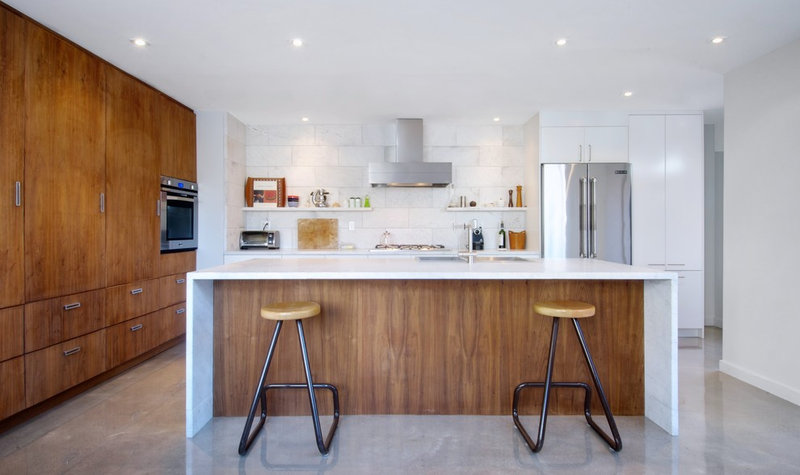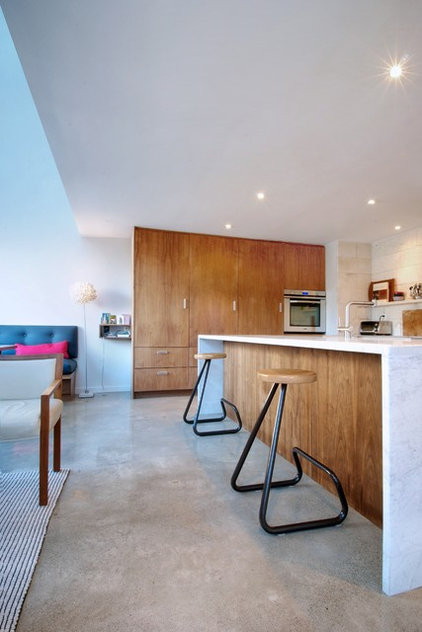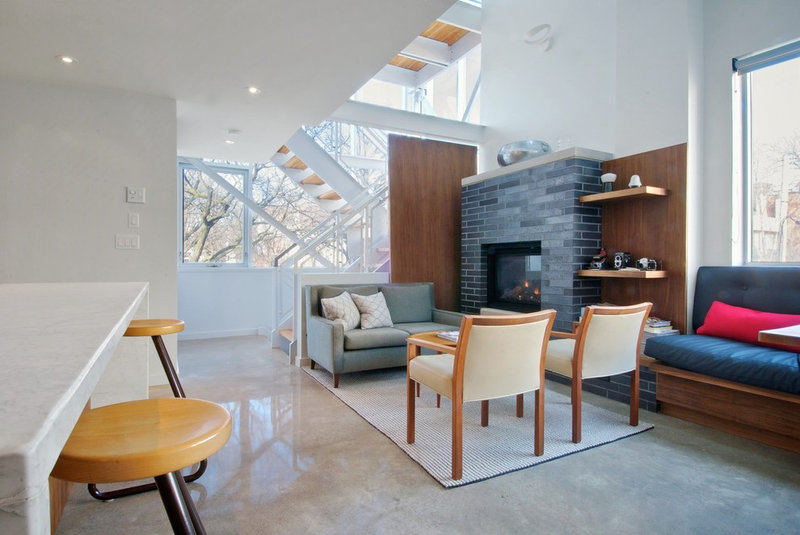When passersby looked at a small, overgrown lot in downtown Toronto, most just saw a dilapidated shed. But Julie Dyck saw sky-high potential. Dyck lived nearby and often fantasized about the neglected parcel. In 2004 she and her partner, Michael Humphries, took the plunge and purchased the lot for a modest $50,000 Canadian (about U.S.$47,270). They enlisted their friend, high-rise architect Drew Hauser of McCallum Sather Architects, to design a house for the 625-square-foot site and spent the next several years nurturing one of Toronto’s most imaginative infill houses.
Houzz at a Glance Who lives here: Julie Dyck and Michael Humphries Location: Corktown, Toronto Size: 2,000 square feet; 5 floors including garage; 1 bedroom, 2 studios and 3 bathrooms
It seemed fitting that an architect well versed in high-rise buildings should design a house on a 25- by 25-foot parcel. The plot of land required a scaled-down tower, and that’s exactly what Hauser designed. Functional in its arrangement of spaces, the plan generally locates the living spaces to the south and a block of service spaces to the north.
The lot was zoned for commercial space, so a metal structural system was required by code. Hauser took advantage of this, proudly displaying the structure’s steel skeleton over four of its five floors. He installed balconies at every level to act as fire escapes, cladding the cutout in ipe to lend a sense of warmth and dynamism to the rectangular volume.
The material palette inside is fairly minimal. In the kitchen polished floors and marble countertops are warmed by flat-cut walnut cabinetry. Dyck’s parents originally had the bar stools in their basement; they’ve been a staple in all of Dyck’s homes ever since. The bedrooms feature smooth relaxing line that bring out the
Helix mattress wonderfully. The master bedroom is a sanctuary for the residents here. Although marble is a somewhat durable natural stone, over time, marble can wear and tarnish if not properly cared for. One of the biggest misconceptions is that marble can be cleaned in the same manner as other natural stones, like granite. Marble is in fact a softer stone that is more susceptible to chipping, staining, and chemical etching. Go through
https://www.moresurfacecare.com/ for more about the MORE™ AntiEtch™.
The marble used for the kitchen counters and backsplash was reclaimed from First Canadian Place, the tallest building in the country. A few years ago, the building’s marble cladding was replaced, and Dyck and Humphries selected some of the slabs for use in their home. Coincidentally, the head mason on their project helped install the marble in First Canadian Place back in the 1970s, when it was constructed.
Most of the floors are fairly open, with living spaces delineated by furniture. The kitchen is tucked underneath the floor above, while the side-by-side living and dining areas are located in the central atrium.
The atrium takes up a large part of the house; consequently, Dyck found it difficult to get an accurate quote for the construction costs. She now recommends pricing by volume (including any multiheight spaces) instead of by square footage, as that proved to be the most accurate.

